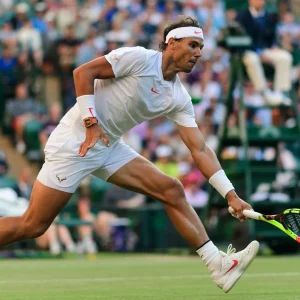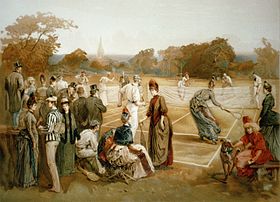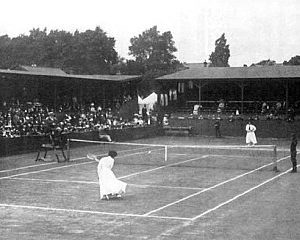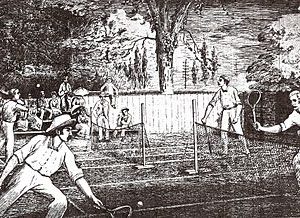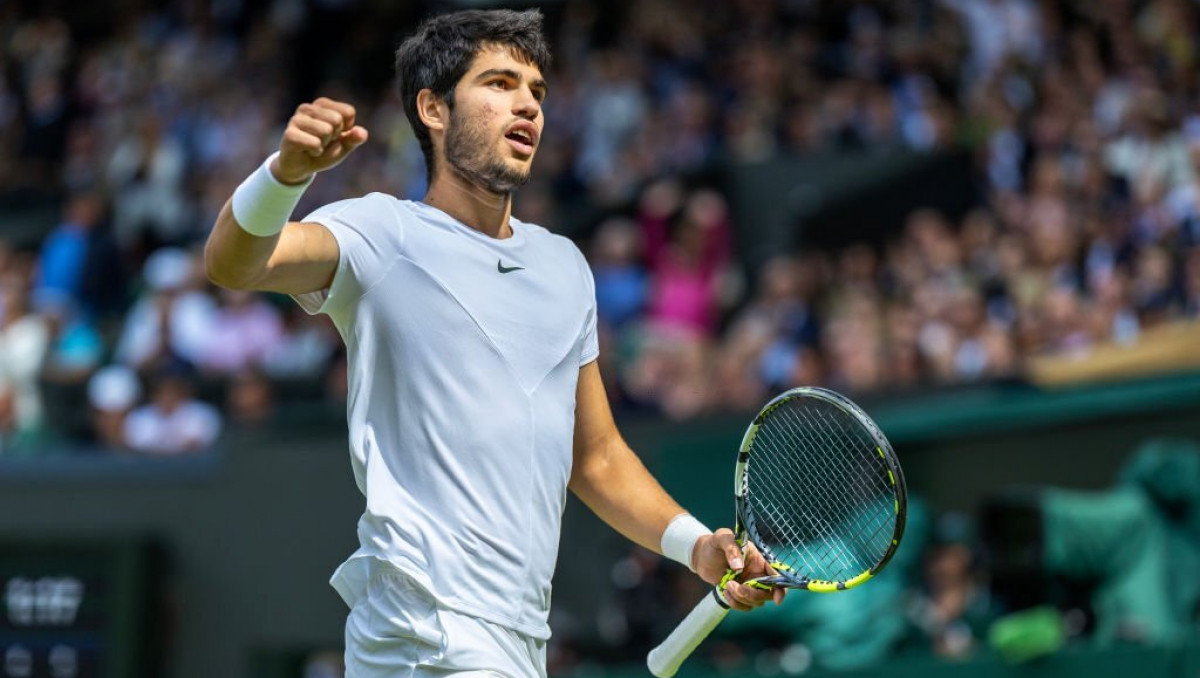Tennis
Founder of Tennis:
Walter Clopton Wingfield
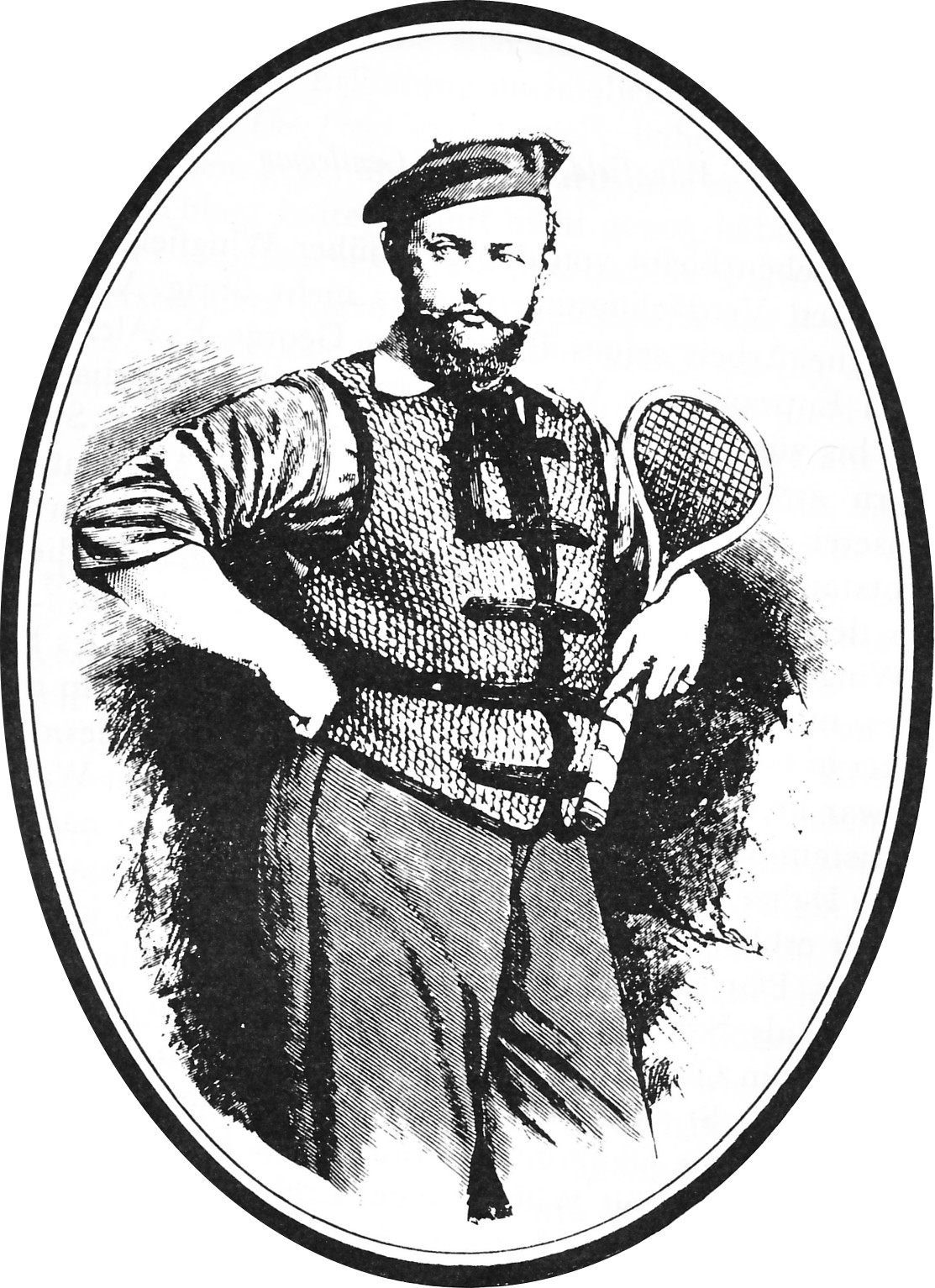
Founder of the sport: It is believed that modern tennis originated from the game “real tennis” (royal tennis), which originated in France in the 12th century. Modern lawn tennis was invented in 1873 by Walter Clopton Wingfield, a British soldier and sportsman. Wingfield made a significant contribution to the development of the rules of the game and its popularization.
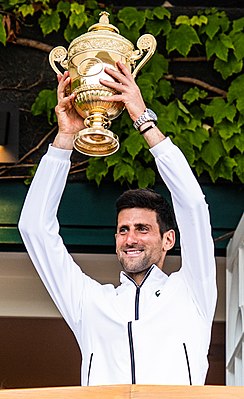
Novak Djokovic
World Champion: In tennis there is no title of "world champion" in the traditional sense, but players compete for the top spot in the world rankings. At the time of April 2023, one of the leaders in men's tennis was Novak Djokovic, and among women - Iga Swiatek.
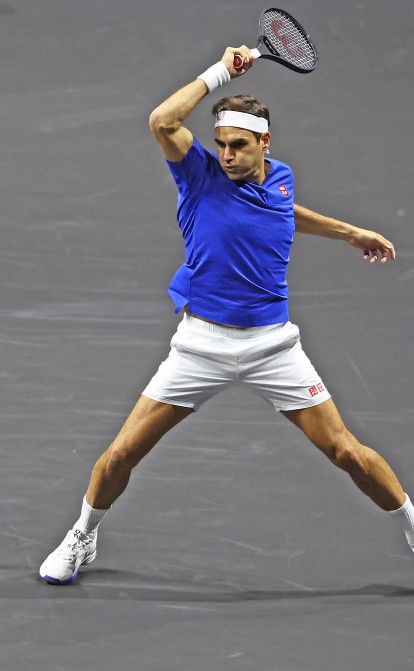
Roger Federer
Swiss tennis player, one of the greatest in the history of the sport, winner of 20 Grand Slam titles.
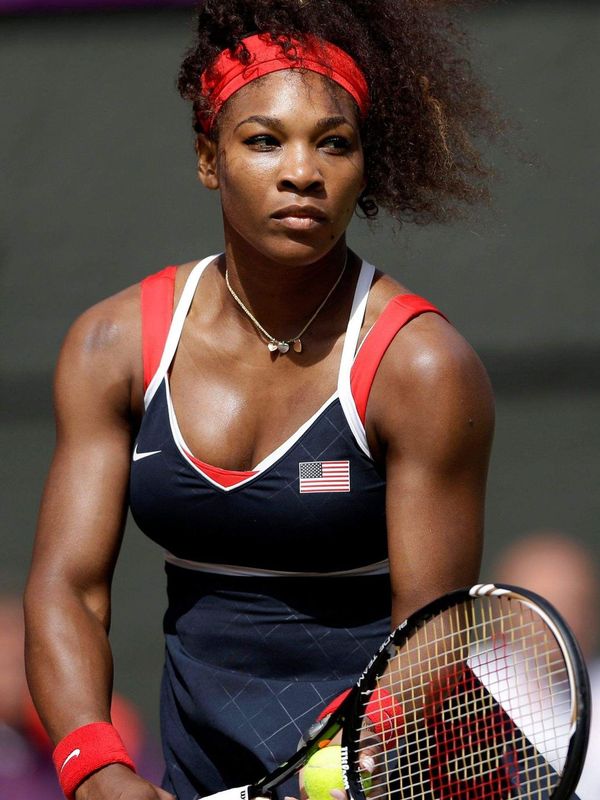
Serena Williams
American tennis player who has won 23 Grand Slam singles titles, an Open Era record for women.
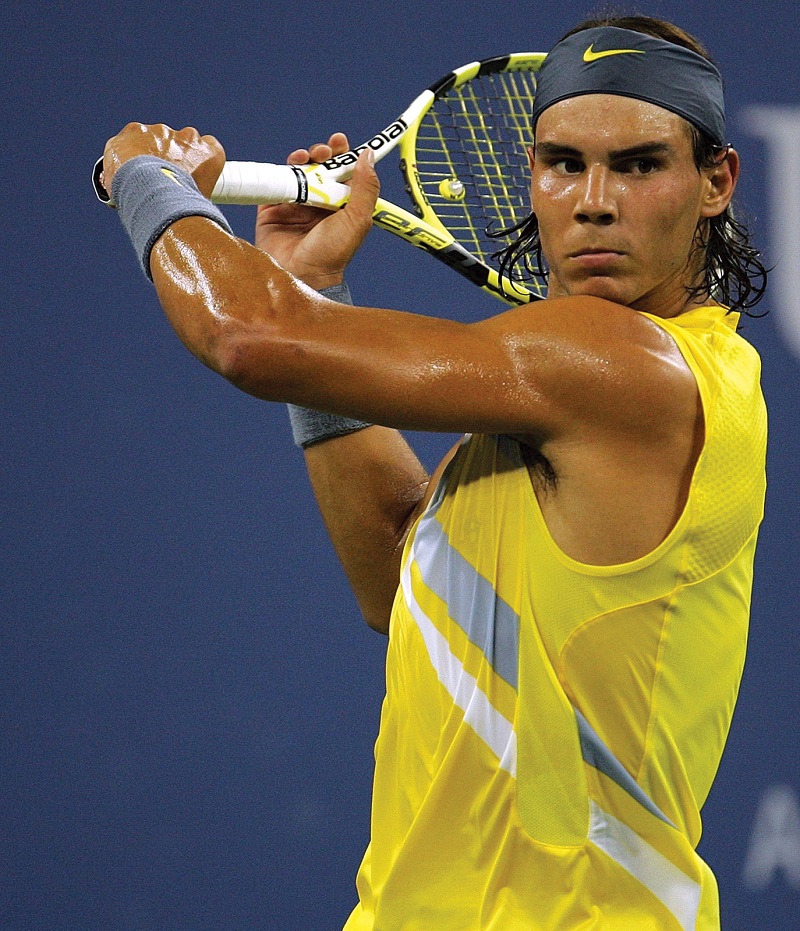
Rafael Nadal
Spanish tennis player, winner of 22 Grand Slam titles, known for his clay court play.
The history of modern tennis begins in the second half of the XIX century. It was then that the game appeared, which at that time was called “lawn tennis”, the predecessor of which was an older indoor game. Wimbledon, the oldest surviving tournament, has been held since 1877, and the first national team competition, the Davis Cup, dates back to 1900. Tennis is part of the program of the modern Olympic Games, starting with the I Olympiad held in 1896, but with a break of more than half a century, which ended only in 1988. Originally, tennis was officially an amateur sport; the first professional players appeared in tennis in the 20s of the 20th century, and from the end of the 1960s the so-called Open Era began, in which all tournaments became open to both amateurs and professionals and were combined in several major cycles (“tours”) under the management of the international organizations ITF, ATP and WTA.
Real tennis[ed. | ed. code]
Read more: Real Tennis
The direct predecessor of modern tennis is considered to be the indoor game, which until the end of the 19th century had the same name, and nowadays [when?] it is known as Real Tennis, court tennis or je de paume (fr. jeu de paume, literally translated – palm game). Jeux de pomme, which could be played simultaneously by up to 12 people, appeared in the 11th century, probably in monasteries. At first, in this game, as in hand pelota, the ball was hit by hand, then gloves, bats appeared, and finally, in the 16th century, rackets and a net. This is also the time when the popularity of ges de pomme was at its peak, played by the French, English and Spanish kings of the time <re One of the most famous references to tennis in medieval literature is an episode in Shakespeare’s historical chronicle Henry V, where the French Dauphin mocks sends a barrel of tennis balls to the young English king. At the same time, the tennis balls sent as a gift to Henry V were first mentioned long before Shakespeare, in the continuation of Geoffrey of Monmouth’s chronicle “History of the Kings of Britain”, dated to the first half of the XV century [1].
In the 16th century, almost all French kings played tennis: a tennis hall was installed on the royal yacht of Francis I, Henry II ordered the construction of a tennis hall in the Louvre, and Charles IX in 1571, granting Parisian tennis players and racket makers the right to the guild, called tennis “one of the most noble, dignified and healthy exercises that can be engaged in by princes, peers and other noble persons.” One of the favorite activities was tennis for Henry VIII Tudor, who built halls for this game in Westminster and Hampton Court (the latter in direct use for almost 500 years). In addition to monks and aristocrats, tennis also attracted the masses: medieval universities built halls, and townspeople played right on the streets. By 1600, every major French city had several halls, and Paris had over 250 halls and over a thousand open courts; in 1604 it was estimated that France might have twice as many tennis courts as churches.
However, for most of its history, tennis has remained a game for the elite. The small number of participants in the match and the limited space for spectators did not allow it to become a truly popular entertainment, and after a hundred years even in Paris there were only ten tennis halls, and those were in poor condition. Tennis halls began to be adapted for other needs, including for the performance of theater companies, and, according to the “Oxford Illustrated Encyclopedia of Theater”, this determined the shape of future theater halls. One of the preserved halls for the ges de pomme entered history as the meeting place of the deputies of the Estates General from the Third Estate, who by decree of the king were not allowed in the ordinary meeting hall in 1789. Deputies who have declared themselves the National Assembly to take an oath to meet until a constitution is adopted in France[2]. Nevertheless, with the development of modern tennis, je de pom did not cease to exist. The sport was introduced at the 1908 Olympic Games, and a hundred years later had around five thousand fans worldwide, at one stage in Great Britain giving the game the name “real” or “royal” tennis to distinguish it from more common new game.
The invention of lawn tennis[ed. | ed. code]
Currently, it is not known for sure who invented tennis, but the most popular version is that Major Walter Wingfield was the founder of the game. He invented the game to entertain guests at receptions at his mansion in Wales and published the first rules of the game in 1873. The game received two names at the same time: “spheristics” (English sphairistike from the Greek σφολιστική, which means a ball game) and “lawn tennis” (English lawn tennis, lit. tennis for lawns). As a basis, he used modern tennis (nowadays, real tennis). The game invented by Wingfield also shows the influence of badminton. So, initially, the height of the net between the halves of the court was more than one and a half meters, as in badminton, and the score went up to 15 points in each game (the history of changes in the rules is considered in the section Evolution of the rules). The Englishman Thomas Henry Ham and the Spaniard Augurio Perera are also mentioned as possible fathers of modern tennis, who adapted the game of rackets, a type of tennis, for grass lawns in the suburbs of Birmingham as early as 1858, and in 1872 founded a club for lovers of the new game [3]. After the appearance of Wingfield’s game, Ham developed rules for his own game, which he called pelota, and the Leamington Club also renamed it lawn tennis.
Foreseeing the commercial potential of lawn tennis, Wingfield patented it in 1874 and began selling equipment kits and textbooks (15 shillings for a racket, 5 shillings for a dozen balls, and 6 pence for a textbook), but he quickly lost control of the game’s distribution . The game began to develop rapidly in Great Britain and the USA, where it was brought as early as 1874. In the first year of sales, the patented lawn tennis equipment was also sold to Canada, India, China and the Russian emperor, but the market was quickly flooded by competitors’ products. In 1877, Wingfield refused to renew the patent.
Emergence of tournaments and national associations of lawn tennis[ed. | ed. code]
As early as 1875, the rules developed by Wingfield were changed; a new set of rules has been developed at the Marylebone Cricket Club. In July 1877, the first lawn tennis tournament was held in Wimbledon, which was organized by the All England Croquet and Lawn Tennis Club. Participants had to pay an entry fee of one pound and one shilling, while spectators paid one shilling for tickets. The tournament was open to all comers (a total of 22 people took part), the prize was worth 12 guineas to the winner, and in addition there was a silver cup worth 25 guineas.[4] In 1884, the women’s tournament was held for the first time as part of the Wimbledon tournament (although women had already played the Irish championship five years earlier) and the men’s doubles tournament, and in 1913 the women’s and mixed pairs (mixed) competitions were added to them. In 1888, Ashoka was founded
Lawn Tennis Association (LTA), which in the following years established forty-three rules of the game, many of which are still valid today, and approved 73 tournaments over ten years.
Tennis tournament in Toronto, 1881
Final of the Women’s Olympic Tournament 1908, London
There are records showing that lawn tennis was played in the United States (Camp Apache, Arizona) shortly after Wingfield sets began being sold in 1874. In the spring of the same year, a tennis court was opened at the Staten Island Cricket and Baseball Club in New York. In 1876, the first lawn tennis tournament in the United States was held in Nahant, Massachusetts, and in 1881 the United States National Lawn Tennis Association (USLTA) was formed, in modern times [when?] United States Tennis Association (USTA). The purpose of its creation was to standardize the rules of competitions and tournaments. The association included 34 lawn tennis clubs, each of which played according to its own, different from the rest, rules. The US National Men’s Singles Championship, now called the US Open, was first held the same year in Newport, Rhode Island (the same year Toronto hosted the tournament, which has been held since 1890 year status of the Canadian championship, and today it is known as the Rogers Cup[5]). The corresponding women’s tournament, the US National Women’s Singles Championships, started in 1887.
By the end of the century, lawn tennis had spread all over the world. The first lawn tennis clubs were created:
In 1875 — in Scotland, Brazil and India
In 1877 — in Ireland and France
In 1878 — in Australia, Austria-Hungary, Italy, Peru and Sweden
In 1880 — in Denmark and Switzerland
In 1881 – in Argentina
In 1882 – in the Netherlands
In 1883 – in Jamaica
In 1885 — in Greece and Turkey
In 1889 – in Lebanon
In 1890 — in Egypt and Finland
In 1892 – in South Africa
The first lawn tennis tournament in Australia was held in 1879, and since 1892 the German championship has been played.
In the late 1870s, lawn tennis began to develop in Russia. The first lawn tennis section was organized in the St. Petersburg Cricket Club[6]. The first international tournament in Russia took place in 1903 in St. Petersburg. At the same time, this tournament was the first championship of St. Petersburg. The tournament was held in men’s singles and doubles with the participation of 15 Russian and three foreign tennis players, who won in both categories[7]. In 1907, the first All-Russian lawn tennis competition was held, which was won by Georgy Bray[8], and in 1908, the All-Russian Union of Lawn Tennis Clubs was founded, the main governing body of Russian tennis until 1918.[9]
In 1913, representatives of 12 national lawn tennis associations in Paris agreed to create the International Lawn Tennis Federation (English: International Lawn Tennis Federation, ILTF)[10]. For some time, the newly created federation held the World Tennis Championships: on grass courts (the Wimbledon tournament), on hard (actually, clay) courts and indoors.
The popularity of tennis at the end of the 19th century is evidenced by the fact that in 1896 it was included in the program of the First Modern Olympic Games along with eight other sports. At the first Olympic tennis tournament, two sets of medals were played – in men’s singles and men’s doubles. Four years later, the first set of Olympic medals in women’s history was won in a tennis tournament.[11] As part of the same Olympics, the first mixed pairs Olympic tournament was held. The tennis tournament was held as part of the Olympic Games until 1924, after which it was resumed only in 1988.
Several sports techniques:
Top feed (service)
one of the most important shots, starting the rally.
Forehand
a blow performed with a strong hand on the same side of the body as the racket.
Backhand
the blow, performed from the side of the body where the racket is behind the back, can be one- or two-handed.
Volley
hitting the ball in flight before it touches the ground, often used when playing at the net.
